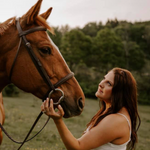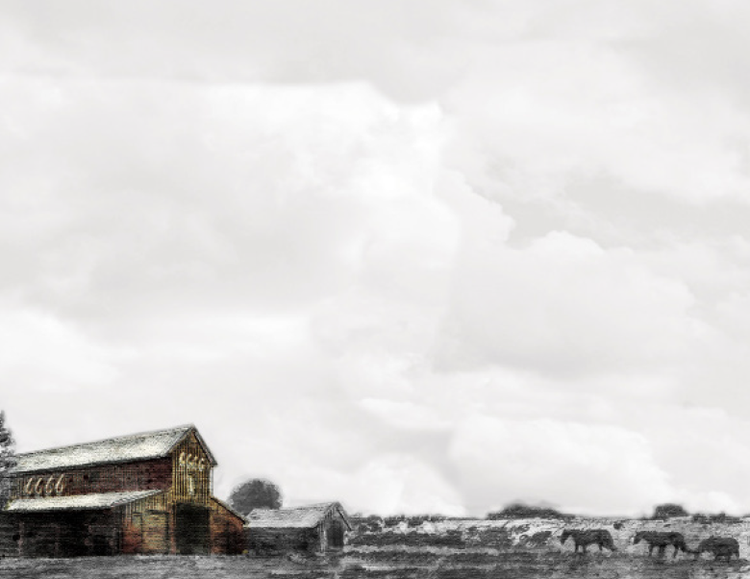As horse owners and riders, it’s vitally important to understand equine behavior and what makes horses ‘tick,’ so to speak.
Understanding why your horse reacts the way they do will improve your relationship and any training you do with your horse – both in and out of the saddle.
Not only will the relationship with your horse improve with this horse behavior knowledge, but you can better care for your horse and increase the chances they live a happy and healthy life.
Let’s get into some of the basics!
Herd Behavior and Traits
Horses are herd animals by nature, which means they are inherently social creatures. In the domestic world, humans also become a part of the horse’s herd.
In the wild, horses thrive in this herd environment and have a strong social life that includes behaviors like play, mutual grooming, and looking out for danger on behalf of the herd. They are also known to travel many miles a day to find new sources of sustenance, so daily movement is an integral part of keeping them healthy and happy.
The structure of a herd consists of stallions, mares, and foals. A herd will have an alpha mare, which is typically an older mare, and one stallion. The alpha mare’s role is to lead the herd while the stallion acts as the herd's protector. Horses exert their dominance over the rest of the herd by controlling the other horse’s movement.
Understanding how dominant mares and stallions fit into the herd's status, and how the control of movement has an effect on dominance, should be kept in mind in domestic horse life as well. By controlling a horse’s movement, you are positioning yourself as the dominant herd leader in your horse's mind.
Equine Body Language
A horse communicates to other horses primarily by using body language. Sometimes these body language signals are subtle, and other times they are very direct.
This is important to keep in mind when working with horses, as they can pick up on, or give off, body language that is sometimes so subtle that it’s missed by humans.
Some parts of the horse’s body to pay special attention to are the ears, tail, head and neck carriage, and facial expressions.
For example, a subtle que from a horse’s tail, such as tail swishing, could be a sign of discomfort or irritation. Conversely, a high-held tail signals they are alert or excited. How the horse positions their body is also going to tell you what they might be thinking or feeling. If a horse is standing splayed out, for example, he might be on the verge of bolting or spooking.
Keep in mind that every horse shows how they feel on different levels. Like people, some horses are bold about body language while others may be more subdued about it.
Prey Animal Behavior
It’s also crucial to remember that horses are a prey species by nature, which has a significant impact on how they react to things even in a domestic environment.
Horses' best defense in the wild is that they are highly reactive, sensitive, and “flight” animals. Their first natural instinct in the face of what they believe is danger is to run.
Their bodies are designed as flight animals as well, and an example of this is their field of vision. Since their eyes are large and on the sides of their head, it gives them an almost 360-degree visual range so they can locate and outrun predators.
Well trained and experienced horses typically aren’t as reactive, but if a horse feels trapped or overly pressured, they may still resort to these natural flight tendencies or act out by kicking, biting, and striking.
Since horses are most vulnerable when drinking or eating, a lowered head, licking, and chewing are all signs of submission and trust.
Another trick that helps them survive in the wild is their memory. It’s said a horse forgives, but never forgets, and this is because of their innate need to remember a negative situation and avoid future danger. So, when training a horse, remember to make the experience a positive one.
How Feeding Your Horse Affects Behavior
Another connection to how a horse behaves and reacts is feed.
Every horse’s sensitivity to feed is different. But for some horses, such as those who are sensitive to the number of calories consumed versus the exercise they are getting, this can be the difference between bad behavior and good behavior.
It’s also important to consider the time of year. For example, your horse may not need as much feed in the winter versus the summer since turnout can be more limited in some climates, or you are riding less due to inclement weather. It could also be the other way around, again, depending on your individual horse and the living environment.
The type of feed, such as a sweet feed versus a low sugar/starch feed, could also be a game changer when it comes to your horse’s behavior. Horses with a sensitivity to sugars or starch could show negative behavior due to this factor alone.
In the wild, horses spend most of their day slowly grazing, which is optimal for the way their gut works. Limited forage has been known to disrupt normal gut fermentation patterns and can cause negative acidic conditions. This leads to inflammation, irritation, and discomfort which can cause behavioral signs such as cribbing, chewing wood, not wanting to eat, or even unwillingness to work.
Feeding smaller amounts of grain and forage more frequently can mimic how a horse would naturally eat.
Gut health is so imperative that it can, and will, have a strong negative affect on a horse's behavior if it is thrown off. This can then lead to painful gastric ulcers or other secondary issues.
One way to ensure your horse’s gut stays healthy and protected is by feeding a pre-, pro-, and postbiotic, such as Complete Gut Protection.
Once the digestive tract is more comfortable and any gut-related pain is relieved, the related negative behaviors should start to subside. However, it may take time for some horses to unlearn bad habits they created due to the discomfort they were feeling.
It’s always a good idea to consult your veterinarian if you think your horses’ negative behaviors are linked to any kind of pain or discomfort.
Get started on the only gut health supplement of its kind, tested and approved by the horses on the Four Sixes Ranch! Try yours today risk-free!


